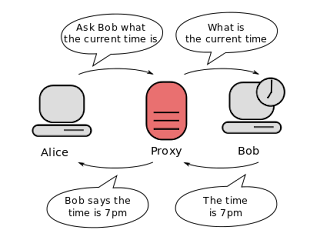How to use automated functional tests to drive your exploratory, security and performance testing efforts?

There is a growing need for technical testers who can test applications comprehensively. With such a low amount of top specialists you may have been encouraged to extend your skill set not only in programming domain. Today I’d like to show you how to start with security, performance and exploratory testing in an easy way. What’s important my approach is not only easy, but also very effective.
Let’s say you are working in a quite mature project which is covered by automated functional tests written using Rest-Assured or Selenium (I’ve chosen these tools because my readers are familiar with them - see blog history for multiple examples).
The starting point is very simple. We would use existing test scenarios to capture HTTP traffic and play with it. Why? Because I assume testing suites cover the most important functionalities from customer point of view.
Proxy basics
In order to capture traffic we will need aproxy which is a server (a computer system or an application) that acts as an intermediary for requests from clients seeking resources from other servers. This Wikipedia image explains the idea.

How to setup local proxy?
There are multiple tools which allow you to setup local proxy very quickly. Here are my recommendations + links to step by step setup guides.
a) JMeter - The Apache JMeter™ application is open source software, a pure 100% Java application designed to load test functional behavior and measure performance.
Link to JMeter proxy setup guide
b) Burp - graphical tool for testing Web application security. The tool is written in Java and developed by PortSwigger Security.
Link to Burp proxy setup guide
c) Fiddler - free web debugging tool which logs all HTTP(S) traffic between your computer and the Internet. Inspect traffic, set breakpoints, and fiddle with incoming or outgoing data.
Link to Fiddler proxy setup guide
d) Charles - proxy that enables a developer to view all of the HTTP and SSL / HTTPS traffic between their machine and the Internet.
Link to Charles proxy setup guide
e) OWASP ZAP - one of the world’s most popular free security tools which is actively maintained by hundreds of international volunteers
Link to OWASP ZAP proxy setup guide
Implementation
All right. Traffic is being captured so now we need to generate. Thankfully as I mentioned in the introduction we already have automated functional tests. How to run them via local proxy?
a) Rest Assured
For our API test we need… 1 line. In this example we have a local proxy running on port 8888.
RestAssured.proxy = host("localhost").withPort(8888);b) Selenium
With Selenium it’s a bit more difficult. Let’s assume we are using the most stable chromedriver. I have already explained how to play with Chrome options in my Browser Capabilities Explained post.
Here is the code:
@Override
public WebDriver newWebDriver() {
return new ChromeDriver(getChromeCapabilities());
}
private DesiredCapabilities getChromeCapabilities() {
DesiredCapabilities capabilities = DesiredCapabilities.chrome();
capabilities.setCapability(ChromeOptions.CAPABILITY, getChromeOptions());
return capabilities;
}
private ChromeOptions getChromeOptions() {
ChromeOptions options = new ChromeOptions();
options.addArguments(getChromeSwitches());
return options;
}
private List<String> getChromeSwitches() {
List<String> chromeSwitches = new ArrayList<>();
chromeSwitches.add("--proxy-server=http://localhost:8888");
chromeSwitches.add("--ignore-certificate-errors");
return chromeSwitches;
}Second switch (--ignore-certificate-errors) helps with https/certificate issues.
After running your tests locally with such configuration you should have already captured http(s) traffic in your proxy.
Security testing usage
Traffic captured from functional tests is an excellent starting point for active/passive security scanning. At this point you can just press start scanning (in Burp & OWASP ZAP) knowing that you are testing the most important scenarios. It’s worth to add that attackers would probably start exploring your application going through the same scenarios.
For more experienced security testers there is something even more important. Captured requests expose where untrusted data can be injected into your application. According to OWASP Injection Theory document:
Untrusted data is most often data that comes from the HTTP request, in the form of URL parameters, form fields, headers, or cookies. But data that comes from databases, web services, and other sources is frequently untrusted from a security perspective. That is, untrusted data is input that can be manipulated to contain a web attack payload. The OWASP Code Review Guide has a decent list of methods that return untrusted data in various languages, but you should be careful about your own methods as well.
Performance testing usage
Each step of automated functional test can be captured by Jmeter. I probably don’t have to explain what does it mean to you. Just save the steps, randomize some data, increase the number of concurrent threads and you have your performance test ready. Wonderful, isn’t it?
Exploratory testing usage
Fans of exploratory testing are probably already licking their lips seeing all possibilities. In HTTP request can be twisted, spinned, rolled and reverted. Prizes can suddenly go below zero, shopping promotions above zero, names receive Chinese symbols and checkout basket can suddenly reset to 0. I’m sure you can see how convenient it is to have full application request flow from the beginning of exploratory testing session.
Tags: performance testing, security, testing thoughts
Categories: Security
Updated:
